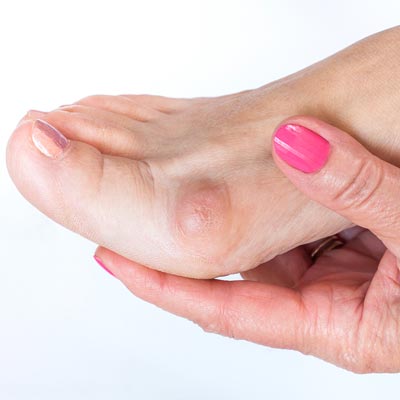How to Treat Corns & Calluses
Corns and calluses are thickened patches of skin that can be painful and uncomfortable. While they generally aren’t a cause for concern, if left untreated, corns and calluses may result in additional irritation or infection. Fortunately, there is a workflow available to help diagnose, treat, monitor and care for this common condition. In this post we will discuss the essential steps for treating corns and calluses in order to provide relief from discomfort and reduce symptoms with natural remedies.
What are Corns & Calluses and How to Identify Them
Corns and calluses are thickened areas of skin that develop on the feet or hands in response to repeated pressure or friction. Corns are typically small and round, with a concentrated center that presses into the skin. Calluses are larger and flatter, with a more diffuse distribution. Both can be painful and unsightly, but they are usually harmless. It is important to identify corns and calluses early so that you can take steps to prevent them from getting worse. Careful inspection of the affected area, along with a thorough evaluation of footwear and activity patterns, can help you determine the cause and develop an effective treatment plan. If you are experiencing discomfort or notice changes in your skin texture, seek professional medical advice from a podiatrist or dermatologist.
Causes of Corns & Calluses
Corns and calluses are a common foot condition that may cause discomfort and pain. They are caused by the accumulation of dead skin cells on the feet, typically on the toes, heels, or soles. While corns and calluses may not always be serious, they can be a nuisance and even affect mobility in some cases. There are several causes of corns and calluses, including friction from poorly fitting shoes, walking barefoot, or high-impact activities like running or kickboxing. Individuals with foot deformities, like hammertoes, may also be more prone to developing corns and calluses. Proper foot care, including regular exfoliation and wearing appropriate footwear, can help prevent these conditions from occurring.

Corns & Calluses
Treatments for Corns & Calluses
Corns and calluses are two of the most common foot ailments experienced by people today. Caused by excessive pressure or friction, both conditions can be painful and uncomfortable. Fortunately, there are a number of treatments for corns & calluses available to help alleviate these symptoms. One of the most effective treatments for corns and calluses is to simply avoid activities that cause them in the first place. Wearing shoes that fit well, using padding or orthotic inserts, and properly trimming nails can all help reduce the risk of developing these conditions. In addition, over-the-counter remedies such as pumice stones and salicylic acid can be used to help remove the hardened skin. For severe cases, however, it is always best to seek the advice of a medical professional to ensure proper treatment and prevention of the conditions.
Prevention Methods to Avoid Corns & Calluses
One of the most common foot problems people face are corns and calluses. These thickened areas of skin can be uncomfortable, painful, and unsightly. Fortunately, there are several prevention methods that can help you avoid developing corns and calluses. Proper footwear is key, as shoes that are too tight or too loose can cause friction and pressure on your feet. It’s also important to use cushioned insoles or pads to reduce pressure on specific areas of your feet. Good hygiene, such as regularly moisturizing your feet and keeping them clean, can also help prevent the development of corns and calluses. By following these simple prevention methods, you can maintain healthy and happy feet.
When to Seek Medical Attention for Your Corns or Calluses
As we go about our daily routines, our feet often take a beating, leading to the development of corns and calluses. While these rough patches of thickened skin may be deemed unsightly or uncomfortable, they often do not require medical treatment. However, if you notice persistent pain, swelling, redness or bleeding associated with your corns or calluses, seeking medical attention is recommended. These symptoms may indicate deeper tissue damage, infection or a rare condition that requires expert attention. To avoid further complications, it is best to schedule an appointment with your healthcare provider as soon as possible.
Flagstaff Foot Doctors: Anthony Rosales DPM
https://www.google.com/maps?cid=8835841318590452161
421 N Humphreys St, Flagstaff, AZ 86001, United States
(928) 774-4825
https://flagstafffootandankle.com/
